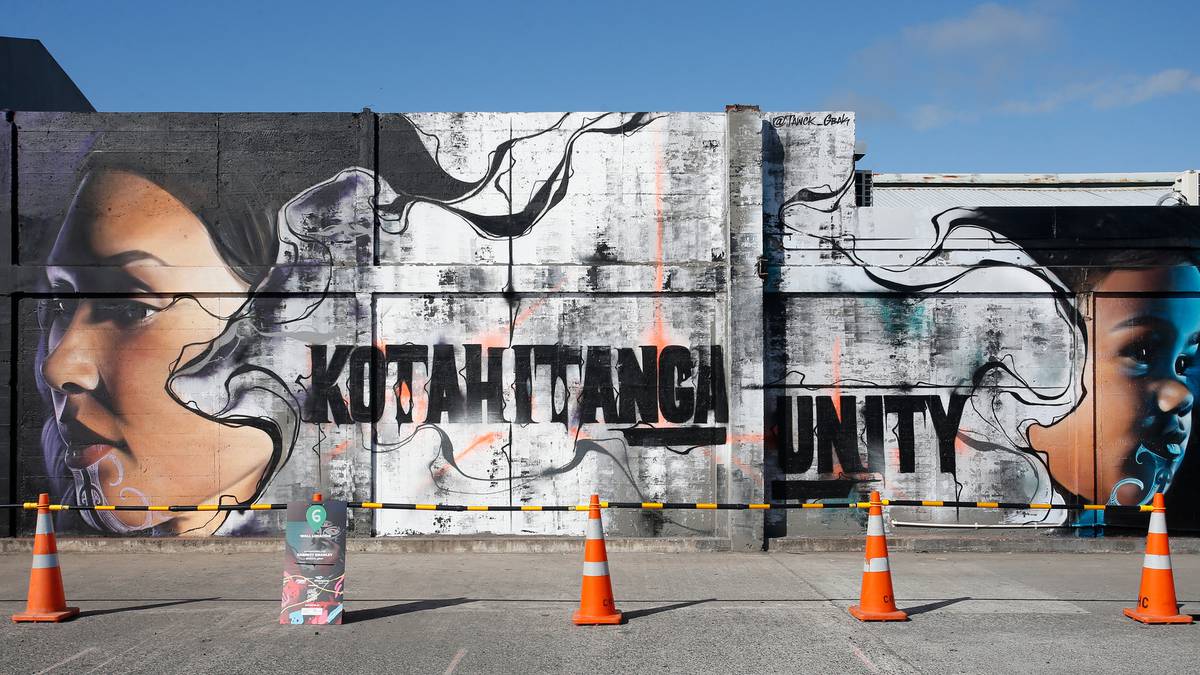Kotahitanga (unity and collaboration) is one of several words that can provide a sense of what Te Ao Māori is. Photo / NZME
OPINION
Co-governance, which shares negotiated decision-making between Māori and central or local government, has to be evaluated in each case. While I still want to reserve judgment for each specific instance of possible co-governance, I
have five reasons for generally supporting the process:
1. Better for Māori, better for all of us
There are good legal and judicial reasons for granting Māori a more active role in decision-making within our public institutions. Te Tiriti is enough justification for some.
I prefer to see co-governance not as something that must happen because of a historical document, but rather because it’s a good thing to do for everyone living in Aotearoa.
Co-governance will put people who are highly motivated to improve Māori wellbeing in positions of power and authority.
Māori leaders, with their culture-specific skills and understanding, will most want to ensure that all Māori have the opportunity to flourish and contribute positively to society. That’s got to be good for all of us.
In terms even Act leader David Seymour might understand, Māori alienation from society costs the Government and the taxpayer through increased crime rates, drug and alcohol abuse, educational underachievement, and poorer mental and physical health.
While those problems aren’t specific to Māori, and it’s important not to overplay the numbers, the sickness at the root of our society resulting from colonisation and ongoing racism is real.
Co-governance in the health sector will surely help overcome institutional bias and improve health outcomes for Māori, thus improving the overall health of our society.
2. Te Ao Māori puts the wellbeing of people first
Like any worldview, Te Ao Māori is contestable, and interpretations can differ for each hapū or iwi.
Nevertheless, certain principles will inform the decision-making of Māori leaders employed in any public institution where co-governance occurs.
The sense of what Te Ao Māori is can be understood through some keywords: manaakitanga (hospitality, kindness, showing respect for others); kaitiakitanga (guardianship); whanaungatanga (relationships between family); wairuatanga (the spiritual connection between people and their environments); and kotahitanga (unity and collaboration).
As these te reo words and their translations show, Te Ao Māori is concerned with the collective wellbeing of people. For that reason, co-governance should strengthen the ethos of public service in our government and council organisations.
David Seymour has focused on “race” as a way to discredit co-governance. He’s pursued this line of attack because he would be on weaker ground arguing against the values embodied in Te Ao Māori, with which many New Zealanders might find some commonality.
When we debate the merits of co-governance, we need to engage with the actual values of Te Ao Māori. I believe those values will make our public institutions more caring and people-focused.
3. Stronger protection of the environment
Co-governance should see greater care given to our natural taonga.
Through negotiated decision-making with Māori, development and infrastructure decisions relating to Three Waters, for example, will better consider future generations’ use and enjoyment of this precious resource.
Te Ao Māori will undoubtedly conflict with pressures to grow the economy, create jobs and develop land. Co-governance won’t remove competing agendas from policy debates. We might, however, more clearly understand and be aware of those conflicts.
We can all benefit from thinking about the longer-term resilience of our economy and sustainable jobs, rather than increased consumption and short-term profits. Te Ao Māori can help us in that process.
4. It can’t do any harm
I’ve yet to read any opposition to co-governance in a specific context that points to any real harm caused to people’s lives. Usually, opposition centres on abstract claims that democracy is under threat.
We can feel strongly about words like ‘democracy’ or phrases like ‘one person, one vote’, but it’s up to opponents of co-governance to point out where the harm is to real lives.
How will co-governance in our health system or of our water infrastructure harm people or the environment?
We can get passionate and argumentative over abstract concepts, certainly – yet we shouldn’t lose sight of real-world impacts.
Where co-governance exists and is being proposed, I see no convincing evidence for any harm being done.
5. Co-governance can be reversed
Any specific move to co-governance of a government or council organisation is reversible.
That might make those in favour of co-governance nervous, but it’s the reality of our political set-up that Parliament retains ultimate sovereignty to make decisions and laws.
The appointment of individual Māori by tribal affiliations or by the government of the day to a legislated co-governing board is new. However, they are still just people making decisions about how those organisations run within the context of the laws and regulations that Parliament and our political parties determine.
Governance shouldn’t be confused with the decision-making process of our Parliament, which is sovereign over everything else, including co-governance.
Co-governed organisations will be subject to scrutiny by political parties, the media, and anyone who wants to investigate their decisions.
This means co-governance has to work. It has to deliver outcomes we can see and probably measure through statistics.
Co-governance will have to be evaluated, defended and argued for by every generation. And that’s how it should be.




